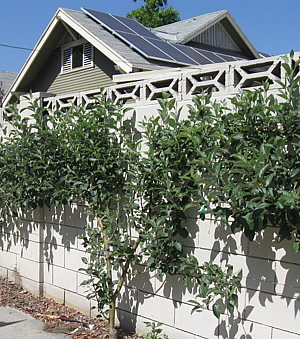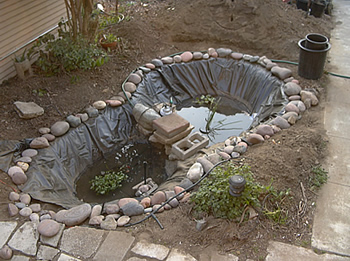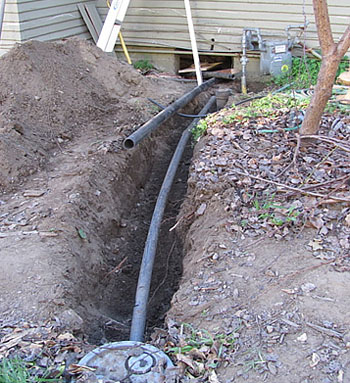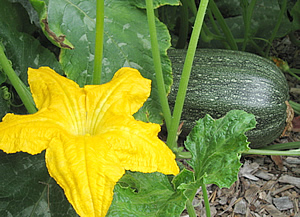What makes us sustainable?
Apple trees and solar panels
Solar Power Greywater pond construction  Gravity-feed greywater system  Drought tolerant landscaping replaces lawns  Worm composting
Worm composting
 Winter squash and blossom
Winter squash and blossom

All of Regen's homes get their power from solar panels that convert the sun's light into electricity. Each house has it's own system that is designed to meet that house's needs. The houses also use energy effecient lights and appliances. We use either compact flourescent lights or LED lights. Three of the homes use high efficiency heat pumps for minimal amounts of heating and cooling. The fourth home uses a house fan that cools the house during the night. Two houses have solar hot water systems that use the sun to pre-heat the water. We will be installing more solar heating on the other houses soon. Water Use & Landscaping All of the houses originally had grass lawns, which require large amounts of water and maintenance. We have replaced all the lawns with landscapes that include fruit trees, herbs, and drought-tolerant plants and succulents. (See Claremont Food Not Lawns for more information) We installed drip irrigation systems that give just the right amount of water where the plants need it, rather than using sprinklers that waste large amounts of water. Some areas of our landscaping use only rainwater, requiring minimal amounts of supplimental watering. Each house has a greywater system installed that directs water from our showers and sinks into the yard. Water from the toilet is considered black water and goes to the city sewer system. The greywater is either pumped into the yard, or flows out with gravity. One house is experimenting with a greywater pond. We are now working on installing cisters to collect rainwater from our roofs. Currently, one house has a cistern burried in the back yard that supplies water to flush a toilet. This prevents us from wasting clean drinking water. Other houses have incorporated rainwater basins to collect the water that falls off the roof and direct it towards plants that can use it. All of these techniques mean that we use far less water than the average household in our neighborhood. Gardens & Compost Along with the fruit trees, each house maintains vegetable gardens and compost systems. We grow a variety of things, including tomatoes, chard, kale, cabbage, beans, winter and summer squashes, zuchinni, peppers, broccoli, artichokes, eggplant, onions, potatoes, lettuce, grapes, garlic, and a variety of herbs. We plant some of our gardens and fruit trees along the sidewalks so that our neighbors can also enjoy our fresh produce. We have made many friends this way! The gardens are fertilized by compost and worm castings. Each house puts all its food waste and kitchen scraps into compost bins or tumblers. Two houses have active worm bins. Worm castings are an excellent fertilizer for trees, herbs, and vegetables. |
||||||
